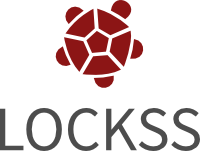Steady State Operating Points of the Doubly Fed Cascaded Induction Machine
DOI:
https://doi.org/10.18618/REP.2012.1.466473Keywords:
Brushless Doubly Fed induction Machine, Doubly Fed Induction Machine, Induction machine, Wound Rotor Induction machineAbstract
Doubly Fed Induction Machines (DFIM) have many industrial applications and are also used as Wind Power generators. The brushes, necessary to supply energy to the rotor, are the main drawback of these machines. Therefore there are interest on Brushless Doubly Fed Induction Machines (BDFIM). The Doubly Fed Cascaded Induction Machine (DFCIM) can be used as a starting point in the study of the BDFIM. Moreover, the DFCIM can also find itself useful applications due to its simpler construction, compared to BDFIM. The present paper will expose the theory of steady state operation of the DFCIM. Operating points, power flow, simulations and experimental results will be presented.
Downloads
References
W. Leonhard.Control of Electrical Drives. Springer Verlag, 3 edition, 2001. https://doi.org/10.1007/978-3-642-56649-3 DOI: https://doi.org/10.1007/978-3-642-56649-3
R. G. Oliveira; J. L. Silva; S. R. Silva; B. R. Junior; W.Hofmann. Desenvolvimento de uma nova estratégia de controle de potência reativa em gerador de indução de dupla alimentação para turbinas eólicas.Eletrônica de Potência, pages 277-284, november 2008. https://doi.org/10.18618/REP.2008.4.277284 DOI: https://doi.org/10.18618/REP.2008.4.277284
S. Brothers & Co. Ltd.; F. Lydall. Improvements in polyphase induction motors.British Patent 16839, 1902.
L. J. Hunt. A new type of induction motor.JournalInstitution of Electrical Engineers, pages 648-677, 1907. https://doi.org/10.1049/jiee-1.1907.0074 DOI: https://doi.org/10.1049/jiee-1.1907.0074
P. C. Roberts.A Study of Brushless Doubly Fed InductionMachines. PhD thesis, Emmanuel College, Univ. ofCambridge, 2004.
R. W. Broadway; L. Burbridge. Self-cascaded machine: alow-speed motor or high-frequency brushless alternator.Proceedings of the Institution of Electrical Engineers,pages 1277-1290, 1970. https://doi.org/10.1049/piee.1970.0247 DOI: https://doi.org/10.1049/piee.1970.0247
S. Kato; N. Hoshi; K. Oguchi. Small-scale hydropower.IEEE Industry Applications Magazine, pages 32-38,2003. https://doi.org/10.1109/MIA.2003.1206914 DOI: https://doi.org/10.1109/MIA.2003.1206914
M. Adamowicz; R. Strzelecki. Cascaded doubly fed induction generator for mini and micro power plants connected to grid.13ˇr Power Electronics andMotion Control Conference, Poznan, pages 1729-1733,september 2008. https://doi.org/10.1109/EPEPEMC.2008.4635516 DOI: https://doi.org/10.1109/EPEPEMC.2008.4635516
B. V. Gorti; D. Zhou; R. Spee; G. C. Alexander; A. K.Wallace. Development of a brushless doubly-fed machine for a limited-speed pump drive in a waste-water treatment plant.Conference Record of the 1994 IEEE IndustryApplications Society Annual Meeting, pages 523-529,october 1994.
D. B. Lima; F. Lessa; A. C. Ferreira; R. M.Stephan. Operating points of a doubly cascaded induction machine. Power Electronics Conference, COBEP'09,Brazilian, Bonito, MS, pages 124-129, october 2009.
A. C. Ferreira. Brushless doubly-fed induction machine :Operating characteristics and applications.Eletrônica de Potência, pages 42-48, june 2003. https://doi.org/10.18618/REP.2003.1.042048 DOI: https://doi.org/10.18618/REP.2003.1.042048
B. H. Smith. Synchronous behavior of doubly-fed twinstator induction machine.IEEE Transactions on PowerApparatus and Systems., pages 1227-1236, 1967. https://doi.org/10.1109/TPAS.1967.291897 DOI: https://doi.org/10.1109/TPAS.1967.291897
D. Picovity; D. Levy; A. E. Mahdi; T. Coffey. The cascade induction machine: a reliable and controllable motor or generator.Electric Power Systems Research,pages 193-207, 2004. https://doi.org/10.1016/j.epsr.2003.06.008 DOI: https://doi.org/10.1016/j.epsr.2003.06.008
S. Williamson; A. C. Ferreira; A. K. Wallace.Generalized theory of the brushless doubly-fed machine.part 1: Analysis.IEE Proceedings Electric PowerApplications, pages 111-122, March 1997. https://doi.org/10.1049/ip-epa:19971051 DOI: https://doi.org/10.1049/ip-epa:19971051
N. Chilakapati; V. S. Ramsden; V. Ramaswamy; J. Zhu.Investigation of doubly fed twin stator induction motor as a variable speed drive. International Conference On Power Electronic Drives and Energy Systems forIndustrial Growth, pages 160-165, 1998.
J. N. B. Silva. Modelagem e simulação da máquina de indução de dupla alimentação em cascata sem escovas. Master's thesis, UFRJ/COPPE, 2009. RJ.
D. B. Lima; F. Lessa; A. C. Ferreira; R. M. Stephan.Steady state analysis of the doubly fed cascadedinduction machine.International Conference on IndustryApplications (INDUSCON), São Paulo, SP, pages 1-4,november 2010. https://doi.org/10.1109/INDUSCON.2010.5739947 DOI: https://doi.org/10.1109/INDUSCON.2010.5739947
F. Lessa; D. B. Lima; A. C. Ferreira; R. M. Stephan.Comprovação experimental dos pontos de operação de uma máquina de indução em cascata de dupla alimentação.Congresso Brasileiro de Automática,Bonito, MS, 2010.
H. Voltolini; R. Carlson; F. Rüncos. A study about the power flow in brushless doubly fed asynchronous generators for wind power systems.Eletrônica de Potência, pages 85-92, july 2006. https://doi.org/10.18618/REP.2006.2.085092 DOI: https://doi.org/10.18618/REP.2006.2.085092
H. Smith. Variable speed twin stator induction machine.Electrical Times, pages 53-54, August 1969.
Downloads
Published
How to Cite
Issue
Section
License
Copyright (c) 2012 Revista Eletrônica de Potência

This work is licensed under a Creative Commons Attribution 4.0 International License.















